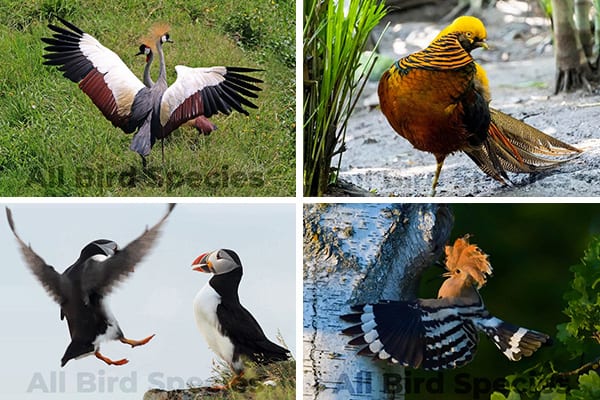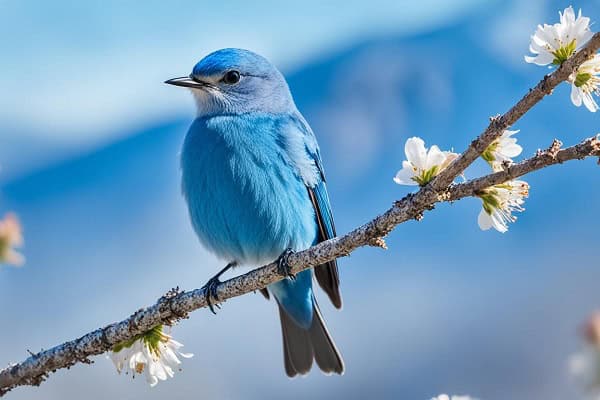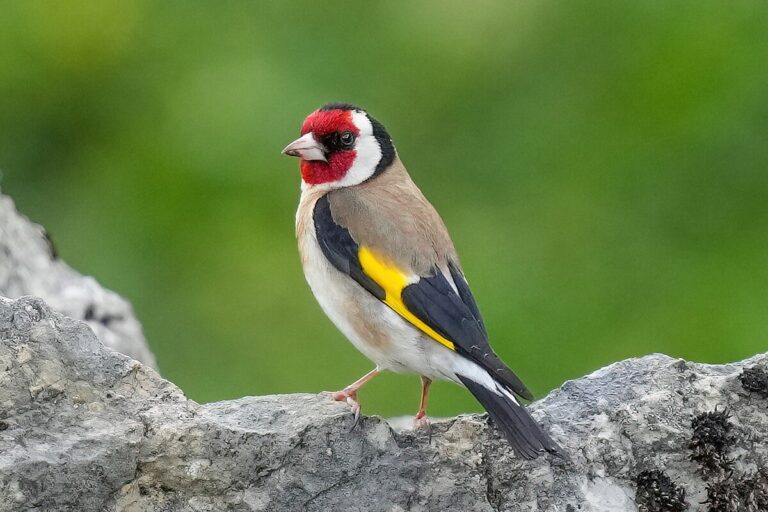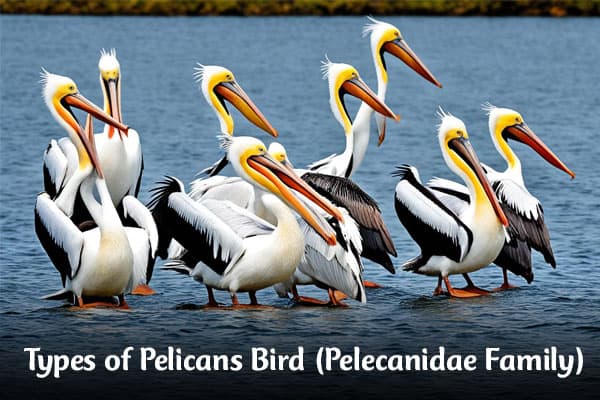8 Amazing Birds With Hair (With Photos)
When you think of birds, you may imagine feathers, beaks, and wings. But did you know that some birds sport hair-like plumage that resembles a fashionable hairstyle? These avian fashionistas are sure to amaze and challenge your perception of what defines a bird’s appearance. From the regal Victoria Crowned Pigeon to the stylish Tufted Puffin, these remarkable birds will leave you wondering if they’ve taken a trip to the salon.
Key Takeaways:
- Several bird species display hair-like plumage, challenging the traditional perception of birds having just feathers.
- The Victoria Crowned Pigeon showcases a regal crown of blue-gray feathers, resembling a stunning hairstyle.
- The Tufted Puffin boasts a tuft of spiky feathers on its head, creating a unique and captivating hairstyle.
- While birds don’t have hair in the true sense, their distinctive plumes can resemble intricate hairstyles that rival human fashion.
- Exploring these amazing birds with hair is a fascinating way to appreciate the diversity and beauty of the animal kingdom.
Victoria Crowned Pigeon (Goura victoria)
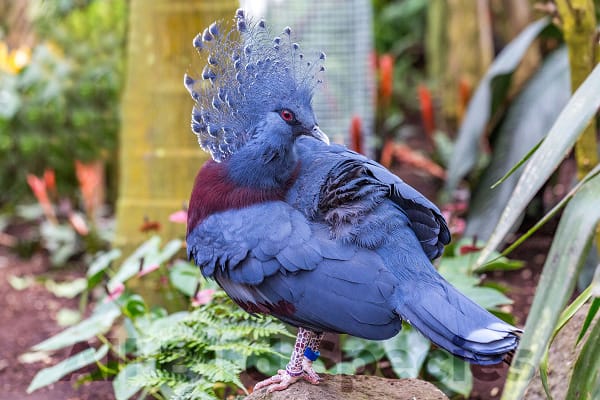
Victoria Crowned Pigeon
The Victoria Crowned Pigeon, scientifically known as Goura victoria, is a spectacular bird species native to the rainforests of New Guinea. What makes them stand out is their unique head of hair-like feathers that resembles a regal crown. With their blue-gray color and a touch of red around their eyes, Victoria Crowned Pigeons are truly a sight to behold.
These magnificent pigeons are known for their large size, reaching up to 29 inches in length. Their striking appearance is further accentuated by their impressive crest of feathers on their heads, which resembles a majestic crown. Each individual feather of the crest is carefully arranged, creating an intricate and eye-catching hairstyle that sets them apart from other bird species.
With their regal plumage and elegant demeanor, Victoria Crowned Pigeons are considered one of the most beautiful pigeon species in the world. Their distinct appearance and captivating presence make them a popular attraction for bird enthusiasts and nature lovers alike.
“The Victoria Crowned Pigeon’s crown of hair-like feathers is truly a natural masterpiece. It showcases the incredible diversity and beauty that can be found in the avian world.” – Birdwatcher Magazine
Interesting Facts about Victoria Crowned Pigeons:
- These pigeons are primarily herbivorous, feeding on fruits, seeds, and leaves.
- They are well-known for their deep, booming calls that can be heard from a distance.
- Victoria Crowned Pigeons form monogamous pairs and have strong family bonds.
- Due to deforestation and hunting, their population is declining in the wild, making conservation efforts crucial to their survival.
Victoria Crowned Pigeon vs. Common Pigeon
| Feature | Victoria Crowned Pigeon | Common Pigeon |
|---|---|---|
| Size | Larger (up to 29 inches in length) | Smaller (approximately 11-15 inches in length) |
| Color | Blue-gray with red around the eyes | Varies (commonly gray or white) |
| Head Plumage | Unique crown of hair-like feathers | No distinct head feathers |
| Habitat | Rainforests of New Guinea | Urban areas, parks, and cities worldwide |
| Conservation Status | Near Threatened | Least Concern |
As the table shows, the Victoria Crowned Pigeon is significantly larger than the common pigeon and features a unique crown of hair-like feathers on its head. Their distinct appearance and habitat in the lush rainforests of New Guinea make them a cherished and protected species.
Experience the grandeur of the Victoria Crowned Pigeon, with its stunning plumage and regal crown of hair-like feathers. Through their unique hairstyle, these pigeons remind us of the boundless diversity and beauty found in the avian world.
Grey Crowned Crane (Balearica regulorum)

Known for its majestic appearance, the Grey Crowned Crane is a large bird species found in parts of Africa. While it may not have hair, it sports an elaborate golden crest on top of its head, giving it a regal and stylish hairdo. With its distinctive black body and pale yellow feathers, the Grey Crowned Crane is a symbol of grace and beauty.
Tufted Puffin (Fratercula cirrhata)

The Tufted Puffin, also known as Fratercula cirrhata, is a charming seabird found along the coasts of the North Pacific Ocean. While it may not have traditional hair, it boasts a distinctive tuft of feathers on top of its head that looks just like spiky hair. During the breeding season, the tuft becomes even more pronounced, adding to its unique hairstyle.
| Tufted Puffin Facts | |
|---|---|
| Scientific Name | Fratercula cirrhata |
| Common Name | Tufted Puffin |
| Habitat | Coasts of the North Pacific Ocean |
| Diet | Primarily fish, supplemented with crustaceans and squid |
| Appearance | Black body, white face, and a vibrant orange beak |
| Unique Feature | Distinctive tuft of feathers resembling spiked hair on top of the head |
The Tufted Puffin is well-known for its striking appearance and distinctive hairstyle. In addition to its tuft of feathers, this puffin species has a black body, a white face, and a vibrant orange beak. With its unique combination of colors and the tuft on its head, the Tufted Puffin certainly stands out in the avian world.
Philippine Eagle (Pithecophaga jefferyi)
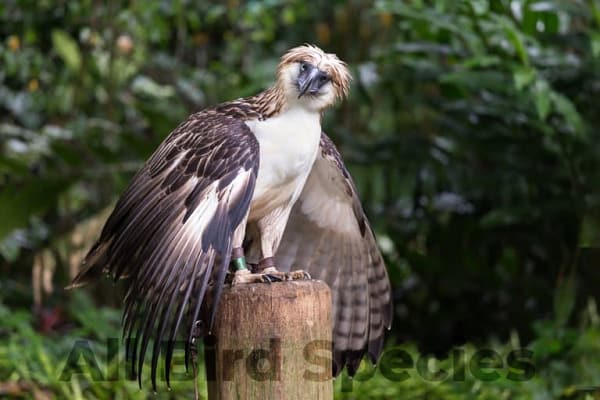
The Philippine Eagle, scientifically known as Pithecophaga jefferyi, is one of the world’s largest and most powerful eagles. With a wingspan that can reach up to seven feet, this majestic creature is a true marvel of nature. Although it lacks hair, the Philippine Eagle possesses a magnificent crown of feathers that resembles a prominent head of hair, adding to its regal appearance. This crown, combined with its striking black plumage and bright white wings, creates a stunning contrast that captures the attention of all who see it.
The Philippine Eagle’s beak is another remarkable feature. This strong and curved beak is perfectly adapted for hunting and tearing prey apart. With its sharp edges and powerful grip, it can take down animals as large as monkeys and flying lemurs, making the Philippine Eagle a top predator in its habitat.
Conservation Efforts
Unfortunately, the Philippine Eagle birds with hair is critically endangered due to habitat loss and hunting. In order to protect this magnificent species, conservation organizations and government agencies are working tirelessly to preserve its natural habitat and enforce strict anti-poaching laws. Initiatives such as captive breeding programs and community education are also being implemented to raise awareness and promote the conservation of this iconic bird.
| Fact | Detail |
|---|---|
| Scientific Name | Pithecophaga jefferyi |
| Wingspan | Up to seven feet |
| Habitat | Primary and secondary forests in the Philippines |
| Diet | Monkeys, flying lemurs, birds, reptiles |
| Conservation Status | Critically endangered |
Eurasian Hoopoe (Upupa epops)

The Eurasian Hoopoe, also known as Upupa epops, is a colorful bird species found across Europe, Asia, and parts of North Africa. It features a distinctive crest that makes it look like it has a unique hairstyle. With its vibrant plumage and captivating appearance, the Eurasian Hoopoe is a true showstopper among birds.
Appearance
The Eurasian Hoopoe has a medium-sized body with a length of approximately 25 centimeters (10 inches). Its feathers are predominantly brown, with black and white patches on its wings and back. However, the most striking feature of the Eurasian Hoopoe is its hair-like crest atop its head.
| Crest | Color | Shape |
|---|---|---|
| Upward Hair-Like Crest | Black and White | Semi-Circular |
The crest of the Eurasian Hoopoe consists of long, thin feathers that stand erect, resembling a spiky hairstyle. The feathers are predominantly black, with white tips, creating a striking contrast against the bird’s brown plumage. The crest’s semi-circular shape adds to the bird’s unique appearance, making it instantly recognizable among other avian species.
Habitat and Behavior
The Eurasian Hoopoe is primarily found in open woodland, grasslands, and savannas. It prefers areas with scattered trees, where it can easily forage for its diet of insects and larvae. The bird is known for using its long, slender beak to probe the ground in search of prey.
It is fascinating to watch the Eurasian Hoopoe as it gracefully moves its crest during courtship displays and territorial encounters, creating a mesmerizing spectacle in the air.
During courtship displays, male Eurasian Hoopoes engage in elaborate feather displays, including fluffing up their crests, to attract mates. Their distinctive crests play a crucial role in communication and signaling within the bird’s social group.
Conservation Status
The Eurasian Hoopoe is listed as a species of least concern by the International Union for Conservation of Nature (IUCN). However, habitat loss and degradation due to urbanization and agricultural practices pose threats to this captivating bird.
Conservation efforts, including the protection of nesting habitats and raising awareness about the importance of preserving biodiversity, are essential to ensuring the continued existence of the Eurasian Hoopoe and its unique hair-like crest for future generations to admire.
Sulphur-Crested Cockatoo (Cacatua galerita)
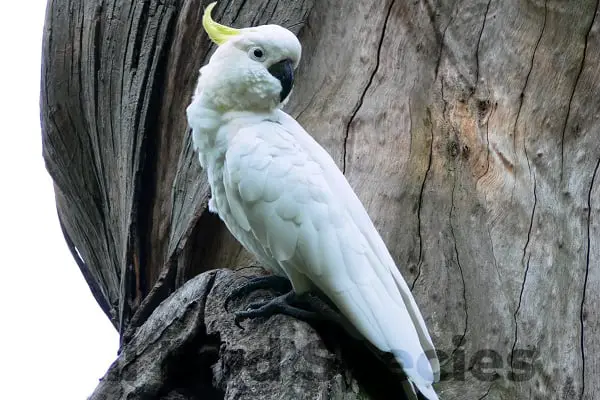
The Sulphur-Crested Cockatoo, scientifically known as Cacatua galerita, is a large and charismatic bird species native to Australia. With its bright white feathers and a prominent crest on its head, resembling a fashionable hairdo, the Sulphur-Crested Cockatoo is a popular pet and a beloved sight in the wild.
These stunning cockatoos birds with hair are known for their striking appearance and playful personalities. With their vibrant plumage and captivating crest, they never fail to draw attention and leave a lasting impression.
Distinctive Features of the Sulphur-Crested Cockatoo
- Feather: The Sulphur-Crested Cockatoo is predominantly covered in beautiful white feathers that give it a pristine and elegant appearance.
- Crest: One of the most striking features of this cockatoo is its yellow crest, which stands out prominently on top of its head. The crest can be raised or lowered, depending on the bird’s mood or level of excitement.
- Facial Expression: With its expressive eyes and strong beak, the Sulphur-Crested Cockatoo communicates its emotions and intentions effectively.
- Social Nature: These cockatoos are highly sociable and thrive in the company of others. They are often found in flocks, engaging in playful interactions and vocalizing with their distinctive calls.
Sulphur-Crested Cockatoo as Pets
Due to their captivating appearance and intelligent nature, Sulphur-Crested Cockatoos are popular choices as pets. However, potential owners should be aware of the commitment required to care for these birds properly.
These cockatoos are highly intelligent and require mental stimulation and social interaction to thrive. They need spacious enclosures, plenty of toys, and regular out-of-cage time for exercise and enrichment.
Additionally, Sulphur-Crested Cockatoos have a long lifespan and can live for several decades. Therefore, ownership should be considered a long-term commitment.
“The Sulphur-Crested Cockatoo is not only a visually stunning bird but also a highly intelligent and sociable companion.”
| Common Name | Scientific Name | Native Region |
|---|---|---|
| Sulphur-Crested Cockatoo | Cacatua galerita | Australia |
Demoiselle Crane (Anthropoides virgo)
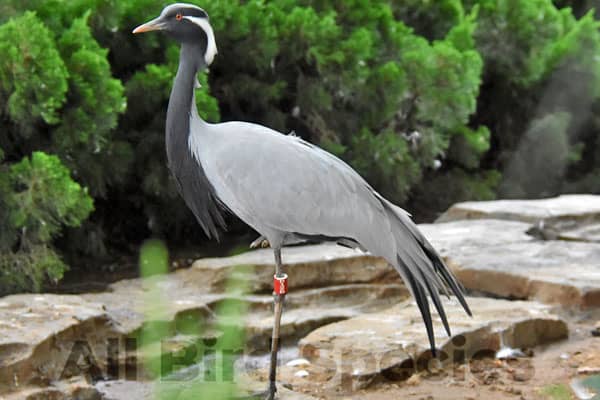
The Demoiselle Crane, also known as Anthropoides virgo, are graceful birds with hair found in various parts of Europe and Asia. While it may not have hair like humans do, the intricate feathers on its head form patterns that resemble a stylish hairstyle. These feathered “hairstyles” add to the crane’s elegance and beauty.
The Demoiselle Crane is known for its slender body and long legs, which contribute to its graceful appearance. Standing tall and proud, this crane captivates with its mesmerizing movements and flowing feathers.
The cran’s feathered “hairstyle” not only adds to its aesthetic appeal but also serves functional purposes. These feathers can help attract a mate, establish dominance, and communicate with other cranes.
With their impressive wingspan and graceful flight, Demoiselle Cranes are a mesmerizing sight in the sky. They undertake long migratory journeys, often traveling in large flocks, creating a breathtaking spectacle for bird enthusiasts.
“The Demoiselle Crane showcases nature’s artistry, with its intricate feather patterns resembling a fashionable hairstyle.”
Whether soaring through the air or gracefully striding on land, the Demoiselle Crane is a symbol of beauty and elegance in the avian world.
| Characteristics | Description |
|---|---|
| Average Height | 80-100 cm |
| Wingspan | 1.8-2.2 meters |
| Color | Pale gray with black and white markings |
| Habitat | Open grasslands, wet meadows, and marshes |
| Diet | Insects, small vertebrates, and plant matter |
| Migratory | Yes |
Golden Pheasant (Chrysolophus pictus)

The Golden Pheasant birds with hair, scientifically known as Chrysolophus pictus, is a stunning bird species native to the mountains of China. This magnificent pheasant is famous for its exquisite and vibrant hair-like plumage, which features a striking combination of gold, red, and black.
With its regal appearance and flamboyant hairstyle, the Golden Pheasant is often regarded as one of the most beautiful birds in the world. The male pheasant, in particular, stands out with its dramatic and elegant head of feathers, resembling a majestic crown.
Whether displaying its luxurious plumage during courtship or gracefully roaming its natural habitat, the Golden Pheasant never fails to capture attention and admiration. Its mesmerizing colors and intricate hairstyle make it a true treasure of the avian kingdom.

